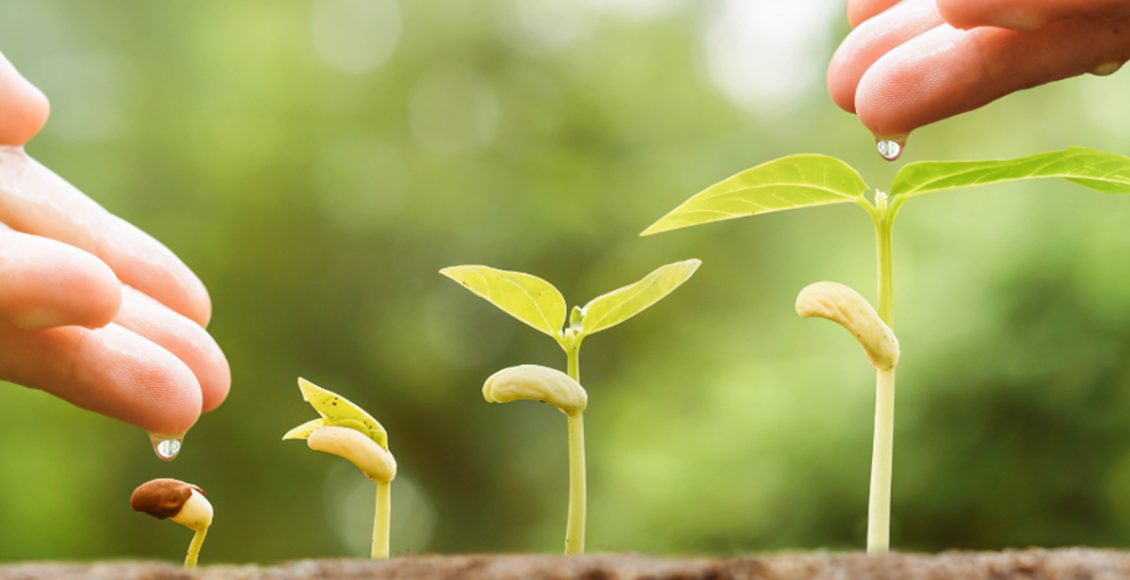
The Power of Collaboration in the Seed Industry: Cultivating Success Together
Historically, the seed industry has benefited from collaborations that drive innovation and continuous improvement of seeds with higher yields and quality traits. However, in the last few decades, a number of successful research-focused startups have been established globally to exploit the benefit of new tools and technologies techniques for improving seed quality with better traits. The collaborations have been forged among different entities, including private companies, public institutes and universities, and organizations such as WorldVeg and CGIAR centers. Here, we explore the significance of collaboration in the seed industry, emphasizing the anticipated transformative impact observed on research, development, and commercialization efforts across different geographies.
Public Sector Collaborations: The public sector organizations globally, whether it be research-focused universities like Cornell University in the USA, Wageningen University in the Netherlands, Tamil Nadu Agriculture University in India, or Indian Council of Agricultural Research (ICAR, India) institutes like Indian Agricultural Research Institute (IARI), Indian Institute of Vegetable Research (IIVR), Indian Institute of Horticultural Research (IIHR), Indian Institute of Rice Research (IIRR), Central Institutes of Cotton Research (CICR), Indian Institute of Wheat and Barely Research )IIW&BR), and many more in different countries, have been on the forefront of leading the development of hybrids for different crops that private sector players are using in their breeding programs. The private sector immensely benefits by collaborating with such organization that helps them develop new hybrids for their focus crops to achieve pole position in the market. These institutions are not only the early developers of new crop varieties but also house wild germplasm sources that help to integrate market-preferred traits into crops of economic importance. In India, to promote high-quality research in PPP mode, the Government of India, the Department of Science and Technology (DST), the Science and Engineering Research Board (SERB) and the Confederation of Indian Industry have established the Prime Ministers Fellowship for Doctoral Research. The fellowship is aimed towards the advancement of university research engagements in line with industry requirements.
Collaborations with One CGIAR: The role of various global organizations, especially the CGIAR centers, a non-profit organization, is to work on crops of importance in developing countries. Now, all the different institutes of CGIAR are under one umbrella, known as One CGIAR. CGIAR institutions have innovated for global impact and are working to solve today’s – and tomorrow’s – interconnected food, land, water, and climate crises. CGIAR is also stepping up its engagement and consultations, striving to ensure the views of the country’s requirements and regional partners are incorporated into their research programs to benefit all. For Example, WorldVeg is an important source of germplasm for the private sector, CIMMYT for maize, International Center for Agricultural Research in the Dry Areas for crops in rainfed and areas with erratic rainfall, Centro Internacional de la Papa (CIP) for potatoes, International Crops Research Institute for the Semi-Arid Tropics (ICRISAT) for millets, etc.
Collaborations among private sector organizations: The role played by private sector companies and private institutions like PBL Technology in the UK in technology licensing and growth of the seed industry globally can not be overstated. The MNCs have led the innovation in the seed industry and brought about the hybridization of the majority of crops across the world. Leading examples of these are maize and soybean. In the last decade, grain feed has increased by 30%, with corn representing 70% of these grains, while in the same period, oilseed meal feed use has increased by more than 34%, with 70% of this feed being soybean. With the increase in demand for animal protein, it is estimated that the world will need an additional 45 million tons of soybeans to be able to produce 35 million tons of soymeal and a further 95 million tons of corn. This is just one example of the crucial role played by the private sector.
The role of the private sector in the adoption of new tools and technologies developed by the public sector, such as gene editing, precision technologies, etc., will lead to the transformation of agriculture as we know it. The private sector has also been investing in technology-driven companies, which then collaborate with other private companies to strengthen their breeding and product development programs.
The development of SU-Canola, Innate potatoes, and GABA (Gamma-Aminobutyric Acid) tomatoes are some such products developed using gene editing platforms by smaller companies funded by MNCs. These collaborations are also expected to speed product development in the near to long term, and collaborations among the private sector will benefit all stakeholders, including smallholder farmers globally. Some examples of startups in agriculture and their contribution to the seed industry are (a) Bayer-backed Pairwise using their Fulcrum platform and deep technical and agronomic expertise in over 60 crops is leading the way in genetics-based innovation in plants and plant-based systems, and (b) Yield10 Bioscience funded by multiple investors across industries have developed technology platforms to develop value-added seeds of various crops, e.g., Camelina.
Collaborations with Seed Association: Several regional and national seed associations play an important role in policies as well as enable access to participation in international organizations related to plant varieties and seeds. The use of procedures and standards developed by these organizations supports the process of regional harmonization and facilitates the regional integration of countries in the regional and global seed trade. Some of the key associations are the International Seed Testing Association (ISTA), The Asia and Pacific Seed Association (APSA), Euroseeds, the American Seed Trait Association, The Brazilian Seed and Seedling Association (ABRASEM), and the International Seed Federation (ISF). Collaborations with associations will bring visibility to private companies and also keep them aware of recent developments in the seed industry rules and regulations.
Collaborative research saves time and avoids redundancy. It promotes cross-fertilization of ideas and results in a more comprehensive research approach. Despite lacking immediate payoffs, it increases the likelihood of solving widespread problems. Collaborative research programs are effective in identifying and addressing issues faster. Any inefficiencies in R&D programs can be a driver for more basic research or the unavailability of appropriate methodologies. A graphical representation of collaborations/partnerships in the seed industry is depicted at https://philhoward.net/2023/01/04/seed-digital/.
For such collaborations, Intellectual Property Rights (IPR) protection and enforcement should be a critical element to foster innovation, attract private investment, and facilitate technology transfer. When public and private sectors collaborate on diverse projects, a robust IPR framework will incentivize innovation by ensuring creators and innovators that their IPR be safeguarded. Furthermore, IPR protection eases the transfer of technology from the public sector to private partners or vice-versa. It promotes a seamless exchange of knowledge and expertise, thus enhancing the overall effectiveness of collaborations.
The strong partnerships between the public sector, private companies, seed associations, and CGIAR centers can help the industry effectively tackle challenges and leverage collective expertise to develop seeds that are vital to ensure food security, meet the everchanging requirements of the market, and promote agricultural sustainability. The policymakers at national, regional, and global levels and industry leaders need to incentivize and invest in such collaborations, recognizing their significance as fundamental drivers of agricultural transformation benefiting all stakeholders in the agri-food value chain. By working together, the seed industry can continue to evolve, meet the changing needs of farmers, and make significant contributions to global food production and security.
Author

Connect with Authors at: E-mail agribusiness@sathguru.com
 Grow Beyond
Grow Beyond 

